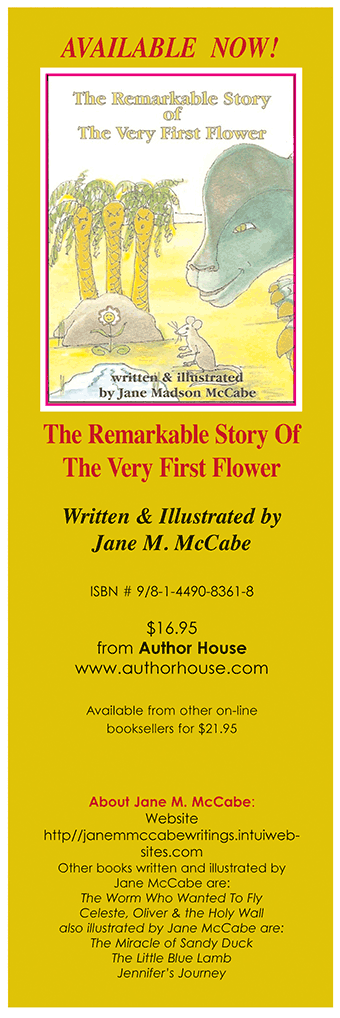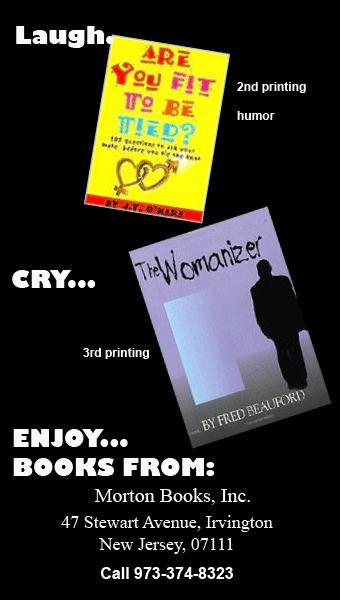REVIEWING
The Secret Life of Marilyn Monroe
by J. Randy Taraborrelli
Grand Central Publishing | New York, NY, 2009 | 526 pages | $15.99
Reviewed by Jane M. McCabe
Marilyn Monroe came from ordinary if somewhat odd people. Born on June 1, 1926, in the charity ward of Los Angeles General Hospital, she was the illegitimate daughter of Gladys Monroe, a woman whose mental instability was such that by the age of three, Norma Jean, as she was called, was placed in the foster home of Ida and Wayne Bolender, where she remained until she was nine years old.
She was befriended by a friend of her mother’s, Grace McKee, who took custody of her. When Grace remarried she felt she had no choice but to place Norma Jean in an orphanage. It was Grace who saw her potential for show business and encouraged her to become an actress.
Despite the phenomenon that Marilyn became and notwithstanding her extraordinary career in show business, her life was marred by tragedy, drug addiction and the kind of insecurity a person feels when abandoned at an early age. Both her grandmother and mother were mentally ill; her mother was diagnosed as a paranoid schizophrenic and spent most of her life in mental institutions. Both were given to hearing voices. Marilyn feared that this, too, would be her fate. For all her fame and adulation, she didn’t seem to enjoy much personal happiness.
Sometimes I think it’s possible to learn more about history through reading biography than by reading history, for a good biography is like a window, a bird’s eye view, if you will, into the place where, and the times in which the person lived. Jan Swafford’s biography of Johannes Brahms is a window into 19th Century Venetian society. Kai Bird and Martin J. Sherwin’s biography, American Prometheus, the Triumph and Tragedy of J. Robert Oppenheimer, not only chronicles the life of the brilliant American physicist who headed the United States’ effort to produce the atom bomb, but of his betrayal by the United States government in the 1950’s when the country was gripped by a fear of communism and anyone thought to be associated with it.
As much as Taraborrelli’s recent biography reveals about Marilyn and the American film industry of the 1950’s and 1960’s, it also gives unflattering portraits of some of the people who dominated that era—the Kennedy’s, Frank Sinatra, Joe DiMaggio and Arthur Miller (Marilyn’s second and third husbands, respectively) but more about them later. It also reflects how psychotherapy was practiced during that time.
In the wake of Sigmund Freud’s founding of psychoanalysis, and his promulgation of the Oedipal and hysteria theories, the 1950’s psychiatry proved to be a respectable field of medicine. Marilyn was one of a number of famous people who underwent years of psychoanalysis with somewhat dubious, perhaps even destructive, results. In her case, endless discussions of the traumas that had marred her childhood only furthered her confusion and anxiety. Since then, long-term psychoanalysis has ceased to be a common practice, replaced instead by short-term therapy and prescription medications.
Due to her insecurities, Marilyn became overly dependent on those to whom she turned for help, whether it was her initial acting coach, Natasha Lytess, or her later coach, Paula Strasberg, the daughter of the famous Lee Strasberg, who established the “method” school of acting. When on the set, she often felt as though she couldn’t say her lines without her coach there.
If one knows anything about the danger of transference between a therapist and his patient, one has to wonder about Marilyn’s relationship with her psychiatrist, Dr. Ralph Greenson, and might find it bizarre that he encouraged her to live at his home (so that she would have a feeling of family).
Marilyn was not only exceptionally beautiful and extremely sexy; for the most part, she was also a kind-hearted and likeable person, someone who genuinely loved her mother despite her deficiencies (she consistently paid for her mother’s hospitalizations), her half-sister Bernice, and her friends. Yet she still felt alone and abandoned.
Early in her career, she discovered that medications could help her sleep, quell the voices in her head and allay her anxieties. As time went on, she became more and more dependent on them. If she couldn’t get the medications she sought from one doctor she would go to another, and if denied again, she would buy them in Tijuana.
Of her three husbands, only the second two merit discussion here. In 1952, when Marilyn was 26 years old and her career as a film star was ascending, she began dating the famous baseball player, Joe DiMaggio. The irony here is that Joe was not only Italian, but also the son of Sicilian immigrants. She could have hardly found a man with a more macho sensibility, and someone who wanted his woman to stay at home, bear children, cook and clean. By the end of the summer, he asked her to give up her career for him. She refused. Marilyn may have been weak and vulnerable, but she wasn’t stupid and she wanted to be a star more than anything.
On January 14th, 1954 this mismatched couple, for whom the sexual attraction was intense, married in a civil ceremony in San Francisco. As much as they loved each other, their marriage was made unhappy by Joe’s demands and even violence, so that by October, Marilyn petitioned for divorce.
One might think Arthur Miller, in contrast, would understand the importance of her career and therefore make a better husband to her, but such was not the case. They married in 1956. Miller was perhaps the greatest of American playwrights—I consider Death of a Salesman the greatest American play, a poignant commentary on the ugliness of the capitalist system. As a husband to gentle, vulnerable Marilyn he was something of a cold fish, seemingly lacking in the empathy she needed. At times he was even cruel. He picked on her a lot and by 1961 they, too, were divorced.
As it turned out, Joe DiMaggio came back into Marilyn’s life when she was incarcerated in the mental ward of Payne Whitney in New York City. She was beside herself and was allowed to make one call. So she called Joe at the motel room where he was staying in Florida. He showed up at Payne Whitney that very night and demanded that Marilyn be released in his custody. This cemented their friendship but they did not become involved again romantically.
Pat Kennedy Lawford, sister to JFK and Bobby Kennedy and the wife of Peter Lawford, became one of Marilyn’s best friends. Pat was drawn to the glamour and glitz that was Marilyn’s, whereas Marilyn longed for the security and financial stability enjoyed by Pat. The Lawford’s owned a home on the Santa Monica beach where they often entertained.
In July 1960, Pat invited Marilyn to be present when her brother, John F. Kennedy, accepted the Democratic nomination for president. Through Pat, Marilyn met and dated both Bobby and JFK. Though the drugs she was taking had pretty much taken over by then, JFK may have precipitated her ultimate downfall. She only spent a couple of nights with him, but she fell in love. His rejection of her may have been the final abandonment which precipitated the overdose of drugs that killed her.
On May 19th, 1962, a birthday party was thrown for JFK at Madison Square Garden, an event attended by many celebrities, including Marilyn Monroe. Engraved in our national memory is that of Marilyn, dressed in a white sequined dress that looked as though she had been poured into it, singing, “Happy birthday, Mr. President” to JFK. In less than three months she would be dead.
I do not believe that Marilyn was murdered by the Kennedy’s, or anyone else. By the time she died, on August 4th, 1962, she was taking enough drugs to kill a horse.
JKF was a notorious womanizer who often entertained women in the White House when Jackie was away. I cannot help contrasting the complicity of the White House staff then to the televised senate investigations Bill Clinton was subjected to because of his furtive, unrewarding liaison with Monica Lewinsky thirty years later, surely an indication of how prurient our society has become.
Our fascination with Marilyn has diminished little since she died 48 years ago. Just as there are plenty of Elvis look-alikes but only one Elvis, so there have been plenty of look-alikes but only one Marilyn. No other actress possesses her combination of vulnerability, gorgeous looks and sex appeal. No other woman has ever been as photogenic nor had as many men fall in love with her as Marilyn Monroe. She is as much an American icon as Coca Cola and Mickey Mouse. No other actress had a sadder life.
Marilyn’s mother outlived her by 40 years. Both Joe DiMaggio and Arthur Miller lived to ripe, old ages, DiMaggio dying at 85 in 1999, and Miller at 89 in 2002. Miller married a year after his divorce from Marilyn, but DiMaggio never remarried.
Jane M McCabe is a writer and painter who recently opened an art gallery in Taft, California. >




